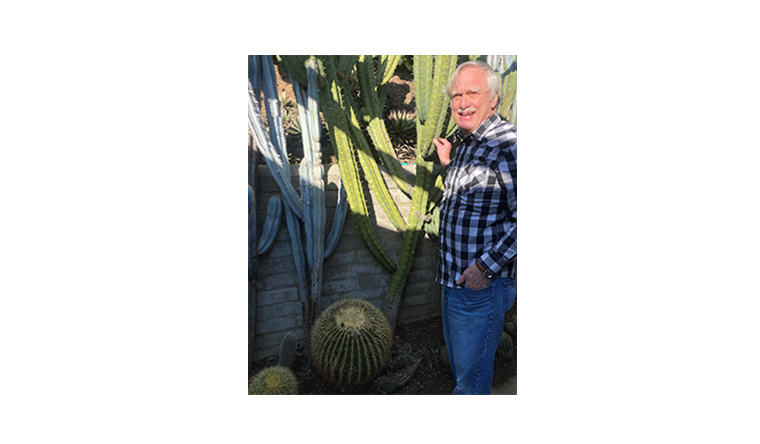
Park Nobel
With a PhD in Biophysics, Dr Nobel's research on ion and water flow for chloroplasts was built on in Tokyo, Japan, and London, UK, and finally with a faculty position at the University of California, Los Angeles. A switch to studying air boundary layers around rigid plant parts led him to focus on agaves and cacti in the field worldwide. His seminal textbooks include The Cactus Primer (1986), Remarkable Agaves and Cacti (1994) and Cacti: Biology and Uses (2002).
Most widely distributed cactus
The cactus with the greatest geographical range is the mistletoe cactus (Rhipsalis baccifera); although thought to have originated in the tropical Americas (where it now is native from Mexico, the Caribbean and Florida, USA, in the north down to Argentina at its southern extreme), it is also found growing naturally throughout much of equatorial and southern Africa, Madagascar and even as far as Sri Lanka, representing a longitudinal range of some 196° (115° W–81° E). There are early indications that it may have established itself even farther east, with one 2022 journal paper describing an established population in Java, Indonesia.
An epiphytic plant (i.e., one that grows on other plants and absorbs moisture from the air), the mistletoe cactus is unique among the 1,600 or so species of the cactus family (Cactaceae) in that it's the only one known to grow naturally outside of the Americas (aka the New World).
Scientists have debated how it came to have such an extensive geographical range, with the two leading explanations being that it may have evolved before the continents of Africa and South America were divided by the Atlantic Ocean or that migrating birds were responsible for distributing its seeds from the Americas to Africa and beyond. However, at this time, nobody can say conclusively which (if either) of these theories is correct.



